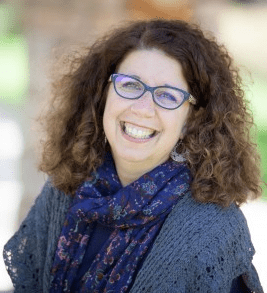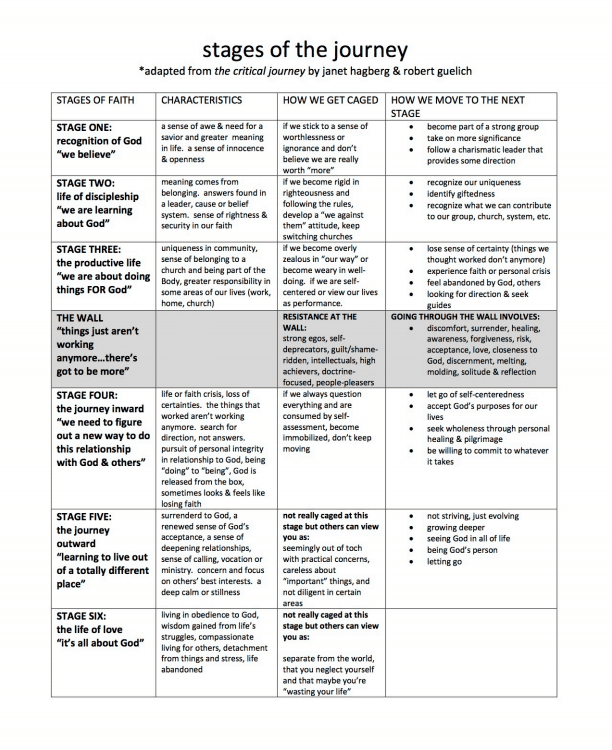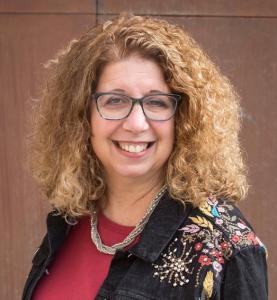By Michelle Van Loon
I’ve been writing about faith at midlife since…well, since I hit that life stage more than a decade ago. I discovered that when I sought support and encouragement from my local church as I was facing a string of disorienting changes and losses directly tied to this stage of my life, the answer I received (and I’m paraphrasing a bit here) was: “Just keep doing what you’ve always done. Serve your way out of that funk. We always need help in the nursery!”
I recognized that while serving is an essential component of a healthy spiritual and emotional life, my fragile health and family responsibilities combined to mean that working in the nursery was no longer a good fit for me.
But that was about all the church had to offer. I discovered that suburban church was pretty typical in that most of the focus of community life was on families with children under 18. About this time, I started noticing stats that reported that Millennials weren’t the only ones leaving the church; people in my age demographic were, too. The statistics proved what I already knew: many committed Boomer and older Gen X believers were quietly slipping out the doors of their church, never to return. I began asking a lot of questions about the way in which we think about discipleship through every stage of life. I’ve blogged on the topic of midlife spirituality on my own website, on Christianity Today’s blog for women, and now at a website a friend and I launched a year ago, and occasionally, here in this space.
Over the years, many people have talked to me about the challenges and changes they’re facing in their faith journey at midlife – things including ministry burnout (say, from years of serving in the nursery), unhealed wounds from bad congregational politics, health issues, financial worries, sandwich generation caregiving responsibilities, and being neglected or marginalized by their local churches. There are good, if heartbreaking, reasons many are drifting away from congregational life.
During this decade, I’ve sought examples of congregations doing meaningful work to support and challenge those in the second half of their lives. While being involved in church leadership and mentoring younger believers are both tried-and-true ways older members can serve the body, certainly not all are called to these roles. There are many other ways to re-engage and strengthen those at midlife and beyond, though they come with this caveat: Older members chafe at being treated as a project or problem to be fixed. And really, isn’t that true for all of us? People can tell the difference between a church offering that comes from a whole-life discipleship orientation versus being a slot to be filled on someone’s org chart, creating more church-y busywork for everyone.
That said, you may find some inspiration from one or more of the ideas below if you’re a church leader wondering if you’ve neglected outreach to some of your older-but-not-yet-old members.
- Resource your congregation with names of trained spiritual directors. While spiritual direction has become more mainstream, for some conservative churches, the notion of a spiritual director may be outside their tradition or experience. (If this is you, I commend to you Sharon Garlough Brown’s Sensible Shoes series; her hybrid of fiction and instruction in these books helps de-mystify what a spiritual director does.) Older members may especially benefit from time spent with a trained, trusted spiritual director who can journey with them as individuals or even in some small-group experiences.
- Create book groups, conversation groups, movie-watching + discussion groups – These offer options for congregants and community members alike to engage ideas. They each require a sensitive leader who is better at asking questions than delivering conclusions (or sermons!); each of these can also be a great intergenerational activity among adults of varying ages.
- Form groups committed to serving the community outside the church. One church was involved through a local ministry with gathering and delivering fresh food to needy families in a lower-income suburb about 45 minutes away. An older man led the group, and together they worked hard to build mutual friendships with a couple of people living in an apartment complex. Over time, that food delivery came to include a small weekly Bible study led by a couple of members from the church. They worked to connect Bible study members (and others) with a nearby church located nearby, and the kingdom of God grew both numerically and relationally – all because the sending church encouraged this group of older adults to serve beyond its own four walls. Integral to their success was the fact that their home church frequently celebrated the work of this group, soliciting both prayer and funding from the congregation for this ministry. Many older adults who serve ministries outside of their church do so without much attention or prayer from the congregation. This church embraced the work of this group, and the entire congregation benefitted from their example and testimony.
- Develop instruction that addresses the unique challenges of second-half-of-life faith and experience. Kim Post Watson wrote her master’s thesis on midlife faith formation. That thesis was the foundation for a group she convened last fall at her church. The group is discussing issues of vocation and self-knowledge, learning about classic spiritual disciplines, and will end in a time of retreat and pilgrimage next summer. She wrote a bit about her plans here. When I checked in with her recently, she said the group is going very well. Other congregations are being proactive in helping their members face and plan for end-of-life issues.
I’d love to hear from you if you know of a church caring for its second-half-of-life members well. I’m always searching for thoughtful, pastorally-sound, real-world examples.














